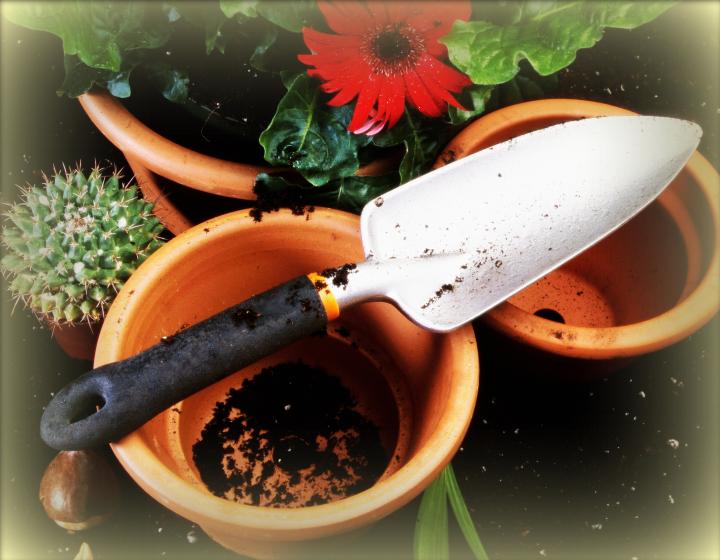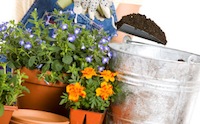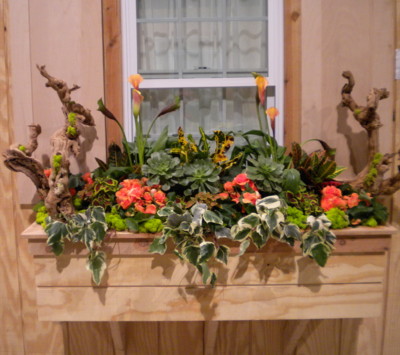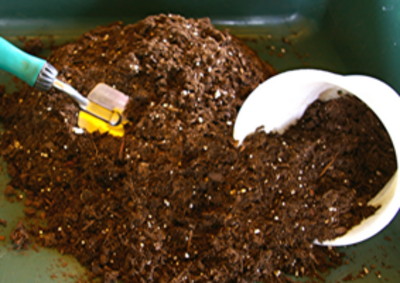





 Photo by Thinkstock
Photo by Thinkstock
Container gardens are on my mind, as the winter chill is easing. I like to grow a few pots of various vegetables and flowers before the usual frost-free date here, May 15, to get a jump on summer.
I learned long ago that it’s much cheaper to make my own potting mix and store it in an old trash can, rather than paying for big sacks of potting mix. I can customize the mix for various plants, too.

The lighter the better when it comes to potting mix. Loose and porous mixtures not only make a container lighter to move, but they transport water, fertilizer and air to plant roots quickly.

It only takes about 20 quarts of custom-blended potting mix for this smashing window box. It’s on the acid side, with extra peat moss to provide more moisture for the begonias and callas. Credit: Doreen G. Howard
The perfect growing mix does not contain soil or garden dirt. It’s composed of peat moss, vermiculite or perlite, sand, and shredded bark or compost. Plants such as lettuce and many flowers like Russian sage and marigolds want sweet soil with a pH of about 7.5. Some are acid lovers, like ferns, asters and strawberries. They need a pH of about 5.5 to 6.0. Start with the basic recipe below and then add soil sulfur to lower the pH or lime to raise the pH. Both additives are sold in 4-pound bags and are found at garden centers.
If rapid drainage is needed, as in the case of cacti, succulents and lavender, add extra sand. For ferns and woodland flowers like primrose that require very moist conditions, include more extra peat moss for water retention.

Potting mix is easy to make and stores well in a sealed container. Credit: Doreen G. Howard
1 bucket (2-½ gallons) peat moss
1 bucket(2-½ gallons) vermiculite or perlite
A half bucket (1-¼ gallons) screened compost or composted cow manure
2 cups fine sand
2 cups pelleted time-release fertilizer
½ cup lime (to counter the acid of peat and keep the pH level near neutral)
Mix thoroughly. Makes enough to fill two 14-inch tubs or five 12-inch hanging baskets. Double or triple recipe for bigger containers.
Potting mix is sold by volume (measured in quarts), and most pots are measured by their diameter. To translate quarts of mix into various pot sizes, use this quick reference.
Pots & Tubs
8-inch 3 quarts
10-inch 6 quarts
12-inch 8 quarts
14-inch 12 quarts
16-inch 20 quarts
20-inch 24 quarts
24-inch 28 quarts
30-inch 72 quarts
36-inch 96 quarts
Hanging Baskets
12-inch 6 quarts
16-inch 10 quarts
Window Boxes
24-inches by 6-inches 12 quarts
36-inches by 6-inches 20 quarts
Next week, I’ll cover the right fertilizers for containers and tips for success.
So ask me questions you want answered in the comments below.
Copyright © www.100flowers.win Botanic Garden All Rights Reserved